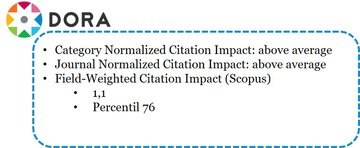Monreal E, Fernández JI, Álvarez R, Sainz de la Maza S,..., Zamora J, Rodero A, Espiño M,..., Rodríguez F, Chico JL, Sainz R, Masjuan J, Costa L, Villar LM. Serum biomarkers at disease onset for personalized therapy in multiple sclerosis
Brain. 2024
"Serum biomarkers facilitate the early detection of immunological mechanisms that determine the prognosis of multiple sclerosis patients, advancing the field towards more personalized medicine"- Dr. Monreal
Summary:
The potential for combining serum neurofilament light chain and glial fibrillary acidic protein levels to predict worsening disability in multiple sclerosis remains underexplored. We aimed to investigate whether sNfL and sGFAP values identify distinct subgroups of patients according to the risk of disability worsening and their response to disease-modifying treatments This multicentre study, conducted across 13 European hospitals. Patients with low sNfL and sGFAP values exhibited a low risk of all outcomes and served as a reference. Untreated patients with high sNfL levels showed a higher risk of RAW, PIRA and reaching an EDSS of 3. Injectable or oral DMTs reduced the risk of RAW in these patients but failed to mitigate the risk of PIRA and reaching an EDSS of 3. Conversely, high-efficacy DMTs counteracted the heightened risk of these outcomes, except for the risk of PIRA in patients with high sNfL and sGFAP levels. Patients with low sNfL and high sGFAP values showed an increased risk of PIRA and achieving an EDSS of 3, which remained unchanged with either high-efficacy or other DMTs. Evaluating sNfL and sGFAP levels at disease onset in multiple sclerosis might identify distinct phenotypes associated with immunological pathways of disability acquisition and therapeutic response.
Why do you highlight this publication?
This study highlights the importance of personalized medicine through the use of serum biomarkers. The combined measurement of sNfL and sGFAP at disease onset reveals distinct mechanisms of disability worsening-peripheral inflammation primarily driven by adaptive immunity and CNS-compartmentalized inflammation associated with innate immunity, respectively. Moreover, the response to currently available treatments varied depending on biomarker levels. Patients with low levels of both biomarkers may respond well to any treatment, including those with lower anti-inflammatory activity. In contrast, patients with high sNfL levels require early initiation of high-efficacy therapies, as they exhibit a more inflammatory profile. Meanwhile, patients with low sNfL but high sGFAP concentrations may benefit from alternative approaches, emphasizing the need for novel therapies under investigation, such as Bruton's tyrosine kinase inhibitors. These findings have a direct impact on clinical practice, enabling earlier optimization of treatment selection with the ultimate goal of improving patients' quality of life.
Publication commented by:
Dr. Enric Monreal
Multiple Sclerosis group, IRYCIS
Neurology specialist, HURYC



